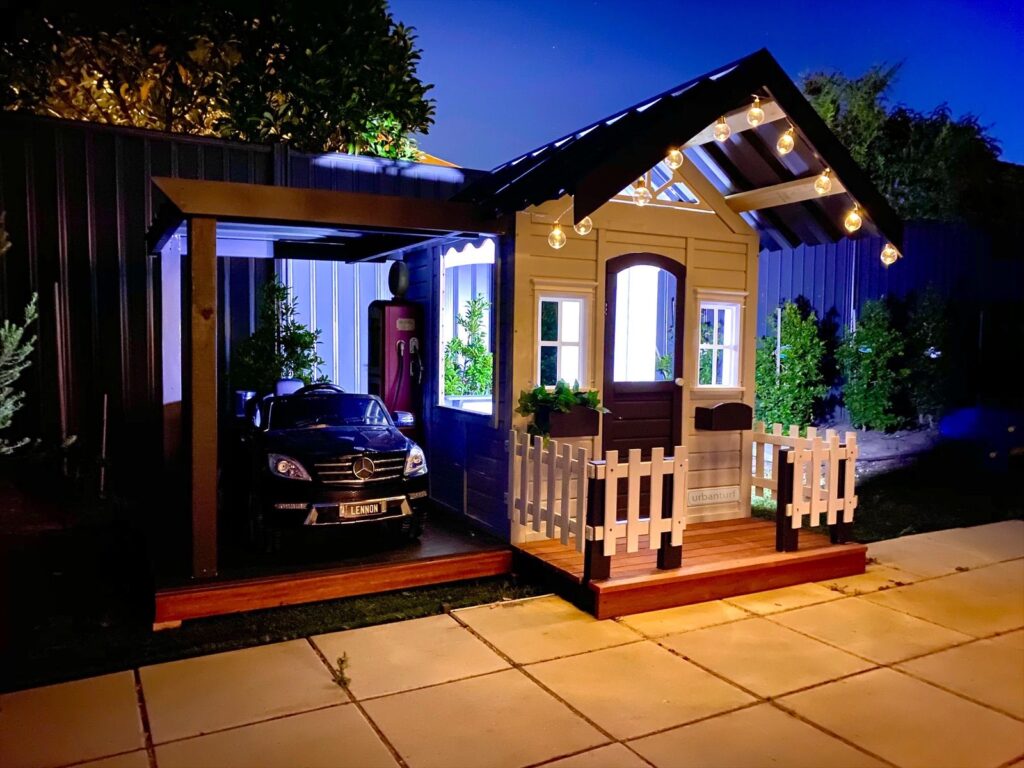A cubby house, often called a playhouse or garden shed, is a small, fun space designed for children to play, imagine, and explore. These charming little structures offer a private retreat for kids and can be a delightful addition to any backyard. In this guide, we’ll dive into everything you need to know about cubby houses, including their benefits, types, and tips for choosing and maintaining one.
What Is a Cubby House?
A cubby house is a small, often whimsical structure typically found in a backyard. It serves as a play area where children can engage in imaginative play, invite friends over, or simply enjoy their own space. Cubby houses come in various designs, from simple wooden sheds to elaborate miniature homes with multiple rooms.
The Purpose of a Cubby House
The main purpose of a cubby house is to provide a dedicated space for children to play and create their own little world. Unlike playground equipment, which is usually focused on physical activity, a cubby house encourages creative and role-playing activities. It can be a cozy hideaway, a place for tea parties, or even a mini fort.
Benefits of a Cubby House
Investing in a cubby house can offer numerous benefits for both children and parents. Here’s why a cubby house is a fantastic addition to your home:
1. Encourages Imaginative Play
A cubby house sparks creativity and imagination. Children can transform it into anything from a pirate ship to a princess castle. This imaginative play helps in cognitive and social development.
2. Provides a Safe Space
A cubby house offers a safe, enclosed space where children can play freely. It provides a sense of security and privacy, allowing kids to have their own little world.
3. Promotes Outdoor Activity
Having a cubby house encourages children to spend more time outdoors. This promotes physical activity and helps them stay active and healthy.
4. Enhances Social Skills
Playing in a cubby house with friends or siblings helps children develop social skills. They learn to share, negotiate, and work together during playtime.
Types of Cubby Houses
Cubby houses come in a range of styles and sizes. Here are some popular types:
1. Wooden Cubby Houses
Wooden cubby houses are classic and durable. They can be customized with paint, decorations, and furniture. These houses often resemble real homes, complete with windows, doors, and even porches.
2. Plastic Cubby Houses
Plastic cubby houses are lightweight and easy to assemble. They are typically weather-resistant and require minimal maintenance. These houses come in various bright colors and fun designs.
3. Metal Cubby Houses
Metal cubby houses are sturdy and long-lasting. They can withstand harsh weather conditions and are often designed to be more secure. These houses are usually more modern in design.
4. Custom-Built Cubby Houses
For a unique touch, you can opt for a custom-built cubby house. These can be tailored to fit specific dimensions, styles, and features according to your preferences.
Choosing the Right Cubby House
Selecting the perfect cubby house involves several factors. Here’s what to consider:
1. Size and Space
Measure your available space before choosing a cubby house. Ensure it fits comfortably in your yard without overwhelming the area. Consider how many children will use it and choose a size accordingly.
2. Material
Decide on the material based on your needs and preferences. Wooden cubby houses offer a traditional look, while plastic ones are easier to maintain. Metal houses are great for durability.
3. Design and Features
Think about the design and features you want. Do you prefer a simple structure or something more elaborate? Features like working doors, windows, and even a small porch can add to the fun.
4. Safety
Ensure the cubby house meets safety standards. Look for features like rounded edges, non-toxic materials, and secure fixtures. Regular maintenance and inspection are also important to keep the playhouse safe.
Decorating and Furnishing Your Cubby House
Once you’ve chosen and installed your cubby house, it’s time to decorate and furnish it. Here are some ideas to make it even more enjoyable:
1. Interior Design
Add some comfortable seating, small tables, and colorful rugs to make the interior cozy. Use cushions and blankets to create a warm and inviting atmosphere.
2. Themed Decorations
Themes can make the cubby house even more exciting. Decorate with a specific theme like a space station, jungle safari, or fairy tale castle to spark your child’s imagination.
3. Outdoor Accessories
Enhance the exterior with outdoor accessories like a chalkboard, garden path, or potted plants. These additions can make the cubby house look more appealing and interactive.
Maintaining Your Cubby House
Regular maintenance will keep your cubby house in good condition and ensure it remains a safe and fun space for kids. Here’s how to care for it:
1. Clean Regularly
Keep the cubby house clean by removing debris, washing surfaces, and checking for any damage. Regular cleaning helps prevent mold, mildew, and pests.
2. Inspect for Damage
Periodically inspect the cubby house for any signs of wear and tear. Look for loose screws, damaged paint, or other issues that need repair.
3. Protect from Weather
If your cubby house is outdoors, protect it from harsh weather. Consider using a waterproof cover or applying weather-resistant treatments to prolong its lifespan.
Conclusion
A cubby house can be a wonderful addition to your backyard, providing endless hours of imaginative play and outdoor fun for children. By understanding the different types of cubby houses, choosing the right one, and maintaining it properly, you can create a special space that kids will cherish. Whether you opt for a wooden, plastic, or custom-built design, a cubby house is sure to become a favorite spot for play and adventure.
Invest in a cubby house and watch your children’s imaginations soar as they explore their new play haven!



